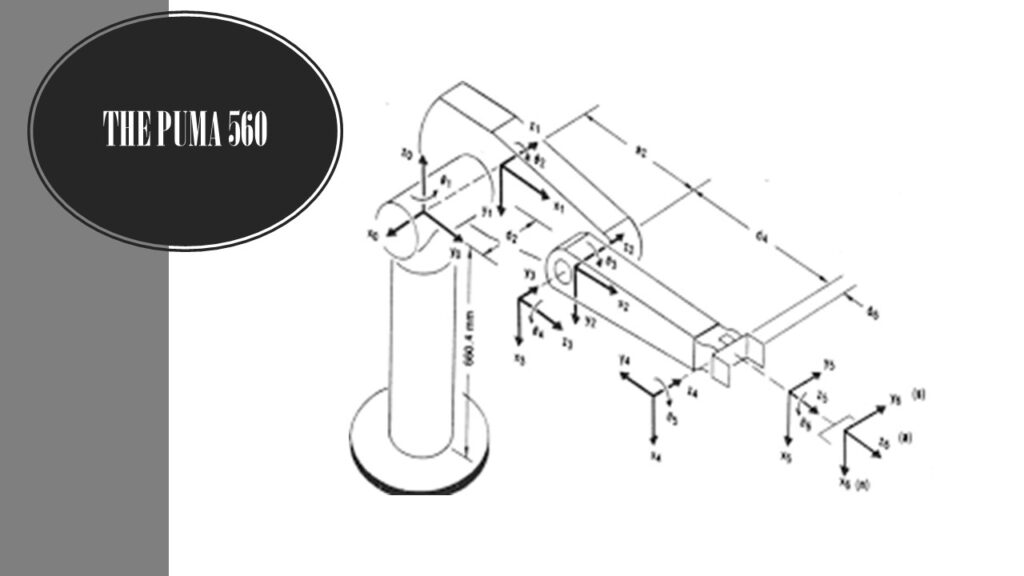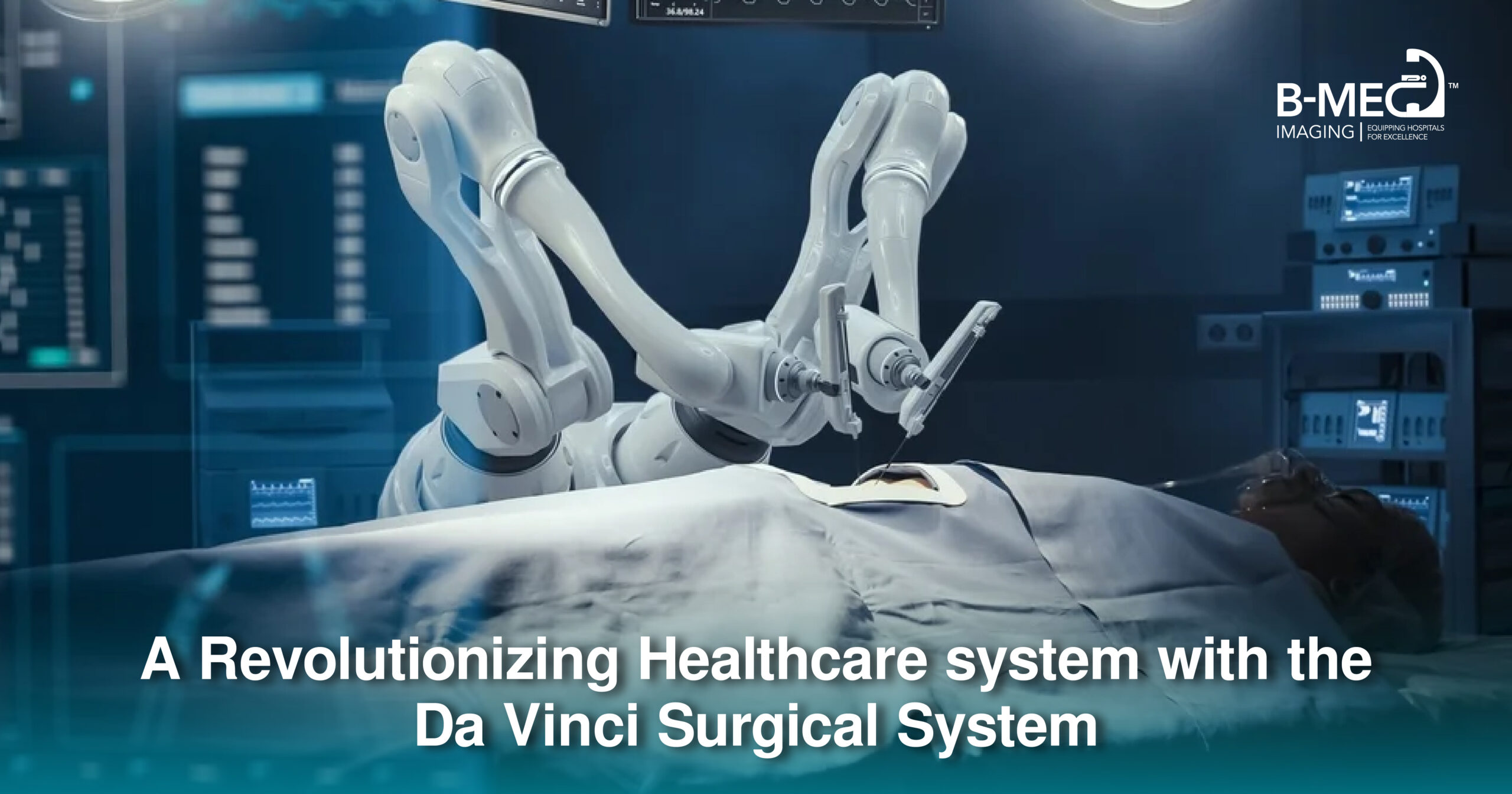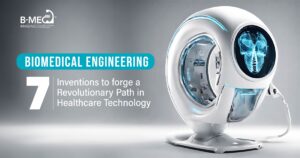

INTRODUCTION:
The 21st century has witnessed an extraordinary fusion of technology, particularly in robotics and biomedical engineering, leading to groundbreaking advancements in the healthcare industry. Among these innovations, the Da Vinci Surgical System stands out as a pioneering robotic surgical platform that has revolutionized surgical procedures and patient outcomes. In this blog we will explore the remarkable contributions of the Da Vinci Surgical System and its significant and positive impact on modern healthcare.
The Da Vinci Surgical System: A Technological Marvel
Developed by Intuitive Surgical Inc., the Da Vinci Surgical System made its debut in 2000 and has since become a hallmark of technological excellence in the field of robotic surgery. The system comprises robotic arms, a high-definition 3D camera, and a console that allows surgeons to control the robotic instruments with unparalleled precision.
Advancing Minimally Invasive Surgery
At the core of the Da Vinci Surgical System’s impact on healthcare lies its ability to facilitate minimally invasive surgery. By utilizing small incisions, the system provides a less intrusive alternative to traditional open surgeries, resulting in reduced blood loss, lower risk of infection, and faster recovery times for patients. This breakthrough has transformed surgical procedures, enabling patients to experience less postoperative pain and scarring while achieving superior outcomes.
Enhanced Surgical Precision and Dexterity
The Da Vinci Surgical System’s robotic arms are equipped with specialized surgical instruments that mimic a surgeon’s hand movements with enhanced precision and range of motion. This level of dexterity allows surgeons to perform intricate and delicate procedures that were once considered too challenging or risky. The system’s intuitive controls give surgeons a real-time, magnified 3D view of the surgical site, empowering them with a level of accuracy that surpasses conventional surgical techniques.
Expanding the Scope of Surgical Specialties
Over the years, the Da Vinci Surgical System has found applications in various surgical specialties, including urology, gynecology, thoracic surgery, and more. It has enabled complex procedures like prostatectomies, hysterectomies, and heart surgeries to be performed with greater precision, leading to better patient outcomes and reduced complication rates. As the system continues to evolve, its potential applications in new medical domains are continuously being explored.
Training and Skill Advancement
The integration of robotics in healthcare has presented a new paradigm for surgical training and skill advancement. Surgeons can now undergo extensive simulation-based training with the Da Vinci Surgical System before performing actual procedures. This enables surgeons to gain expertise and confidence in a safe environment, ultimately benefiting patients by reducing the risk of errors during surgery.
Future Possibilities with AI Integration
The Da Vinci Surgical System has opened the door to further advancements in robotics and artificial intelligence (AI) in healthcare. The integration of AI algorithms could potentially enhance the system’s capabilities by providing real-time assistance and decision support to surgeons during complex procedures. AI-driven insights may also improve surgical planning, patient selection, and postoperative care, leading to even better patient outcomes.
“From Science Fiction to Life-Saving Reality: Da Vinci in Healthcare”
The evolution of the Da Vinci Surgical System from a futuristic concept to a life-saving reality is a testament to the boundless potential of biomedical engineering and robotics in healthcare. Initially, the idea of robots performing surgeries seemed like science fiction, but the Da Vinci System has transcended those early perceptions and become a transformative force in modern medicine. With its robotic arms providing unparalleled precision and its advanced technology enabling minimally invasive procedures, the Da Vinci System has revolutionized surgical practices, offering patients safer and more effective treatments.
Today, this once fantastical vision has become an integral part of operating rooms worldwide, empowering surgeons and positively impacting patient outcomes across a wide range of medical specialties. As technology continues to advance, the Da Vinci Surgical System stands as a remarkable example of how innovation can turn dreams into life-saving realities.
“Empowering Surgeons: The Da Vinci Surgical System’s Technological Leap”
The Da Vinci Surgical System’s technological leap has ushered in a new era of surgical empowerment for medical professionals. With its sophisticated robotic arms and advanced capabilities, the system has become a trusted ally in the operating room, granting surgeons unprecedented precision and control. The intuitive interface allows surgeons to navigate complex procedures with ease, enhancing their skills and expanding the boundaries of what was once deemed possible.
Through the Da Vinci System’s integration of high-definition visualization and tremor reduction, it mitigates human limitations and optimizes surgical outcomes. As a result, surgeons can now tackle intricate surgeries with greater confidence, providing patients with safer procedures, faster recovery times, and improved overall experiences. This technological marvel continues to inspire and transform the landscape of modern surgery, epitomizing how innovation can empower healthcare professionals to elevate the standard of patient care.
Collaborative Robotics in Surgery: Man and Machine Working Together
Collaborative robotics represents a groundbreaking paradigm in the field of surgery, where the Da Vinci Surgical System stands as a prime example of seamless human-machine cooperation. As a pioneer in robotic-assisted surgery, Da Vinci’s intuitive design allows surgeons to control robotic arms with remarkable precision and fluidity, augmenting their own expertise with the system’s technological capabilities.
This harmonious partnership between surgeon and machine fosters enhanced surgical outcomes, as the robotic arms can effortlessly execute complex maneuvers under the surgeon’s expert guidance. With the Da Vinci System’s sophisticated integration of human dexterity and robotic assistance, it exemplifies a future where medical technology complements human skill, paving the way for more sophisticated and transformative procedures. Through collaborative robotics, surgeons can unlock new horizons in surgical care, offering patients safer, more effective treatments and exemplifying the profound potential of man and machine working in harmony.
Navigating Complexity: Da Vinci Surgical System’s Role in Challenging Procedures
The Da Vinci Surgical System has emerged as an indispensable tool for surgeons when navigating the intricacies of challenging procedures. Its advanced technology and robotic precision enable surgeons to tackle complex surgeries with a level of dexterity and control that surpasses traditional approaches. From delicate cardiac surgeries to intricate urological and gynecological procedures, the Da Vinci System’s ability to access hard-to-reach areas and perform precise maneuvers has opened new frontiers in surgical care. By empowering surgeons to overcome the intricacies of challenging cases, the Da Vinci Surgical System has become a catalyst for pushing the boundaries of what is achievable in modern medicine, ultimately leading to improved patient outcomes and redefining the possibilities of surgical innovation.
The PUMA 560 is a pioneering medical robotic system from the 1980s, designed for neurosurgery and orthopedic procedures. With its two robotic arms and remote operation capabilities, it offered enhanced precision and reduced hand fatigue. While surpassed by more advanced systems like Da Vinci, the PUMA 560 laid the foundation for modern robotic-assisted surgery, shaping the future of minimally invasive techniques.

Conclusion
The Da Vinci Surgical System has been a game-changer in the world of healthcare, marking a significant milestone in the convergence of robotics and biomedical engineering. Its ability to enable minimally invasive surgeries, enhance surgical precision, and expand the scope of procedures across various specialties has transformed the landscape of modern medicine. As technology continues to progress, we can look forward to witnessing further advancements in robotics and biomedical engineering, creating a brighter future for healthcare, where patient well-being remains at the forefront of innovation. The Da Vinci Surgical System’s legacy will continue to inspire new generations of medical professionals to push the boundaries of what is possible, ultimately enriching the lives of patients worldwide.
References
- Intuitive Surgical (the manufacturer of the Da Vinci Surgical System): Website: https://www.intuitive.com/
- Mayo Clinic – Da Vinci Surgical System: Website: https://www.mayoclinic.org/tests-procedures/da-vinci-robotic-surgery/about/pac-20384827
- Cleveland Clinic – Robotic Surgery with Da Vinci: Website: https://my.clevelandclinic.org/health/treatments/16149-robotic-surgery-with-da-vinci
- MedlinePlus – Robotic-Assisted Surgery: Website: https://medlineplus.gov/ency/article/007633.htm
- National Institute of Biomedical Imaging and Bioengineering (NIBIB) – Surgical Robotics: Website: https://www.nibib.nih.gov/science-education/science-topics/surgical-robotics
- American College of Surgeons – Robotic Surgery (Da Vinci): Website: https://www.facs.org/education/patient-education/patient-resources/da-vinci
- WebMD – Robotic Surgery with the Da Vinci System: Website: https://www.webmd.com/prostate-cancer/robotic-surgery-da-vinci
- Johns Hopkins Medicine – Da Vinci Surgical System: Website: https://www.hopkinsmedicine.org/health/treatment-tests-and-therapies/da-vinci-surgical-system
- Stanford Medicine – Robotic-Assisted Surgery: Website: https://stanfordhealthcare.org/medical-treatments/d/da-vinci-robotic-assisted-surgery.html
- The New York Times – Robotic Surgery: Website: https://www.nytimes.com/topic/subject/robotic-surgery
- ScienceDirect – Robotics in Medicine and Healthcare: Website: https://www.sciencedirect.com/topics/engineering/robotics-in-medicine-and-healthcare
- The Wall Street Journal – The Da Vinci Surgical System and its Evolution: Website: https://www.wsj.com/articles/SB10001424127887323468604578245333293028700



